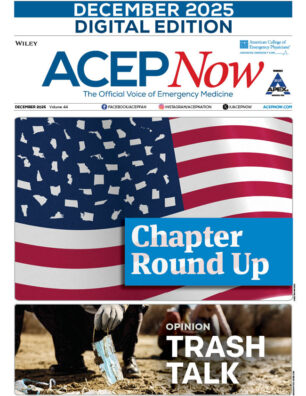Methicillin-resistant Staphylococcus aureus (MRSA) rates are decreasing and S. aureus resistance to clindamycin is rising in the U.S. pediatric population, according to research from the U.S. Military Health System (MHS). MRSA rates have been declining in adult populations in the U.S., but clinical and demographic factors between adults and children may contribute to different antibiotic susceptibility trends.
Dr. Deena E. Sutter, from San Antonio Military Medical Center, Fort Sam Houston, Texas, and colleagues evaluated annual antimicrobial susceptibility trends of S. aureus from infections in pediatric patients receiving care in MHS treatment facilities from 2005 to 2014. Between 2008 and 2014, the annual number of S. aureus isolates declined by about 46 percent, according to an online report in Pediatrics.
Over the study period, susceptibility to erythromycin, gentamicin, and oxacillin increased, whereas there was a significant overall trend of decreased susceptibility to clindamycin, ciprofloxacin, and trimethoprim/sulfamethoxazole (TMP/SMX). Methicillin-sensitive S. aureus (MSSA) susceptibility to clindamycin decreased from 90.7 percent to 83.8 percent, whereas MRSA susceptibility to clindamycin remained stable. Despite the statistically significant decline in susceptibility to TMP/SMX, both MSSA and MRSA remained highly susceptible to this combination (around 98 percent susceptible).
“Our data demonstrate a steady decline in clindamycin susceptibility among MSSA,” the researchers concluded. “This trend may lead to some concern about the continued reliance on clindamycin for the empirical treatment of presumptive S. aureus infections although it is probably premature to abandon this effective antibiotic choice.”
“It is crucial that clinicians remain knowledgeable about local susceptibility rates as it would be prudent to consider alternate antimicrobial agents for empirical use when the local clindamycin susceptibility rate drops below 85 percent,” they noted. “In that situation, beta-lactams, TMP/SMX, or tetracyclines may be used for less severe infections with intravenous vancomycin employed in severe cases. If overall MRSA rates continue to decline and clindamycin-resistance among MSSA continues to increase, we may see a return to antistaphylococcal beta-lactam antimicrobial agents such as oxacillin or first generation cephalosporins as preferred empirical therapy for presumed S. aureus infections.”
Dr. Sheldon L. Kaplan, from Baylor College of Medicine, Texas Children’s Hospital, Houston, wrote an editorial related to this report. He told Reuters Health by email, “In the past two decades we have seen the emergence and then domination of community-associated (CA)-MRSA isolates causing both skin and soft tissue infections and invasive infections. This pattern seems to have peaked around 2007 to 2008 with a steady decline in CA-MRSA infections since then. I don’t think anyone knows why this is happening. Of course, this trend could change readily and CA-MRSA infections could be on the rise again at some point.”
Empirical treatment decisions should not be altered yet,” Dr. Kaplan said. “The frequency of CA-MRSA still is high enough that this organism needs to be covered by the empiric treatment options.”
“The epidemiology of S. aureus infections in children is in flux and continuous surveillance of S. aureus infections is critical so physicians faced with making these empiric choices can do so with the most up-to-date information,” he concluded. “The increase in clindamycin resistance is obviously a good example of this.”
Dr. Stephanie A. Fritz, an expert in S. aureus infections from Washington University School of Medicine, St. Louis, Missouri, told Reuters Health by email, “I think for the pediatric community in general, it’s extremely important to be aware of the increasing prevalence of clindamycin resistance, particularly in MSSA isolates, as this has become in recent years, our ‘go to’ antibiotic for skin infections, as well as for stable patients with invasive infection (given its coverage for MRSA and MSSA and Group A Strep in the past).”
“The increasing resistance to ciprofloxacin is also notable, although this drug is less frequently used in pediatrics,” she said. “The finding that SSTI isolates were less likely to be oxacillin susceptible (i.e., more likely to be MRSA) than other infection types is intriguing.”
I think the important take-home message, considering empiric antibiotic coverage, is the importance of being familiar with the local antibiogram (this is also highlighted by the authors within the article) and use this data to inform the choice of empiric antibiotic therapy,” Dr. Fritz concluded. “If the prevalence of clindamycin-resistant S. aureus strains is high in the region, clinicians should consider the use of TMP/SMX in patients . . . for whom antibiotics are indicated.”
The authors reported no funding or disclosures.
Pages: 1 2 | Multi-Page





No Responses to “Staphylococcus Aureus Susceptibility Changing in Pediatric Population”